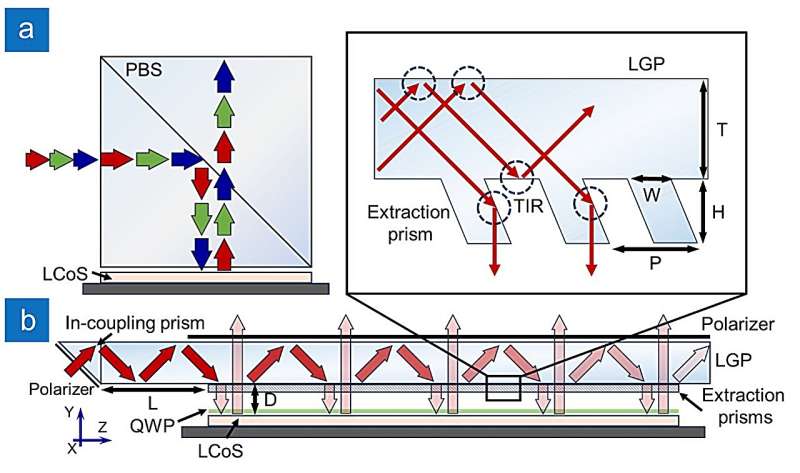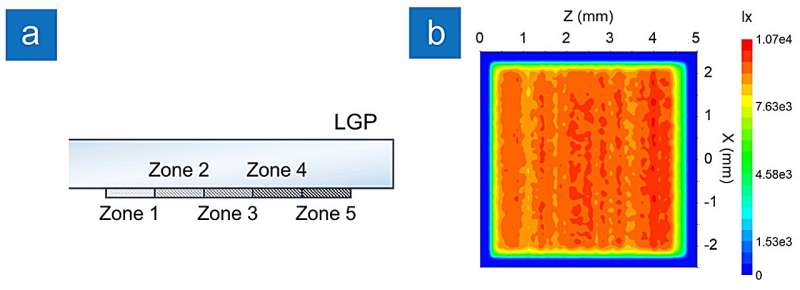Conventional LCoS display with a bulky PBS cube as the illumination optics. (b) The proposed novel LCoS display module with a compact illumination optics. Credit: Opto-Electronic Advances (2024). DOI: 10.29026/oea.2024.240039
Augmented reality (AR) and virtual reality (VR) are innovative display technologies with the ability to revolutionize the way we interact and experience the world.
Unlike VR, which immerses users in entirely virtual environments, AR superimposes digital content onto the real world, enabling vast applications in education, training, retail, marketing, and navigation, just to name a few. AR experiences can be accessed through various devices, including smartphones, tablets, and smart glasses.
Among these, stylish AR glasses will become the mainstream as they offer unparalleled convenience and immersion, lightweight and compact formfactor, seamlessly integrating digital content into the real world.
AR glasses usually consist of two main components: a light engine, responsible for generating digital images, and an optical system, which delivers the generated content to the users. Different optical systems such as birdbath optics and waveguide optics have been applied in commercial products.
The light engines must be very compact while keeping a high optical efficiency to enable longtime comfortable wearing and high ambient contrast ratio.
"Liquid-crystal-on-silicon (LCoS) or micro-LED, who wins?" has become a heated debate question. Micro-LED display is an emissive technology that promises to revolutionize visual experiences with high peak brightness, fast response time, true dark state, and long lifetime. However, its manufacturability remains a significant challenge.
On the other hand, LCoS is a non-emissive reflective microdisplay, which requires a front illumination system. Conventional LCoS system is facing tremendous challenges due to its bulky illumination system. To achieve high optical efficiency, it often incorporates a bulky polarizing beam splitter (PBS) cube. Therefore, achieving an ultracompact yet high-efficiency illumination system for LCoS based AR glasses is in urgent demand.
To minimize the formfactor of the LCoS system, researchers have proposed an ultracompact illumination system with a light guide plate (LGP) to efficiently direct the employed light source to the LCoS panel.
Their study is published in Opto-Electronic Advances.
Extraction prisms are divided into several zones with different fill factor. (b) Illumination uniformity of the output light. Credit: Opto-Electronic Advances (2024). DOI: 10.29026/oea.2024.240039
The light from the light source, e.g., an LED array or laser diodes, is coupled into the LGP using an in-coupling prism. Next, the in-coupled light propagates inside the LGP due to total internal reflection (TIR) at the top and the bottom surfaces. Some of the trapped light enters the extraction prisms, while propagating along Z direction and the remaining light continues to propagate forward in the LGP.
The light inside the extraction prism is reflected toward the bottom LCoS panel through another TIR at the tilted surface of the prism. A similar concept has also been proposed by Prof. Wu's group to generate uniform illumination for liquid crystal displays.
More information: Zhenyi Luo et al, Ultracompact and high-efficiency liquid-crystal-on-silicon light engines for augmented reality glasses, Opto-Electronic Advances (2024). DOI: 10.29026/oea.2024.240039
Provided by Compuscript Ltd

























